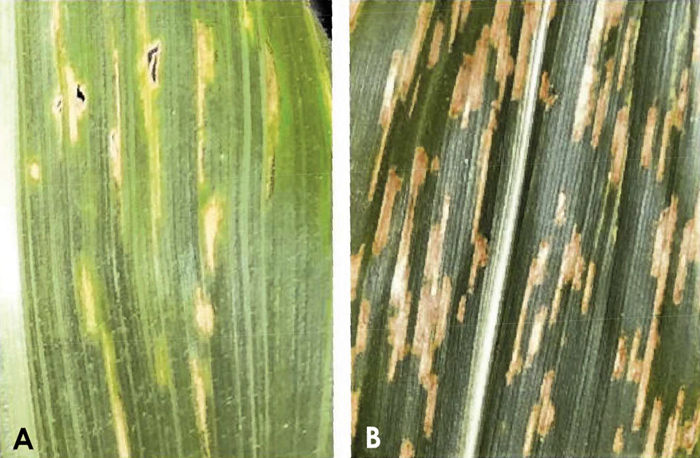Diagnostics clinics function to identify the disease affecting a plant, as well as the causal agent which is responsible for a plant to develop symptoms. Importantly, diagnostics clinics also facilitate research, teaching, extension and regulatory programmes.
Typically, disease symptoms are easily identified once extensive damage has been done to the crop. Unfortunately, at this stage control options are limited and often of no or little value.
A variety of organisms can cause disease in plants and include fungi, bacteria, viruses and nematodes – all of which require microscopic or molecular investigations for identification. Insects can also cause substantial damage to crops, often requiring experts for identification.
Accurate identification of the disease is critical to making informed decisions regarding management options. Treating a crop with the wrong chemical product is costly and will not solve disease issues.
Dual value to producers
The initial value to producers is the accurate identification of the disease and organism causing the disease. Some diseases are characterised by distinct symptoms. However, some pathogens can display very similar signs and symptoms and are more difficult to identify by field inspection alone –especially at early stages of infection. For example, bacterial leaf streak can be confused with grey leaf spot, which results from infection by a fungus (Figure 1).

However, the real value of diagnostics lies in the subsequent research conducted on the wide variety of isolates collected. Once diseases and pathogens have been identified, isolates are stored in what is known as a culture collection. A culture collection houses large numbers of organisms which can be stored for extended periods of time. These collections enable researchers to conduct various research projects, such as investigating how pathogen populations change over time, how similar (or diverse) populations are and how different isolates respond to the same host. Ultimately, these projects provide information to producers and can contribute to improving management practices in the long term.
Diagnostics services also contribute to biosecurity. Routine diagnostics can assist in early detection of new pests and pathogens that can threaten agriculture. Increased trade and travel increase the risk of pests or pathogens being accidentally introduced to a country. When this happens, the agricultural industry is not adequately prepared to manage the disease and significant losses can occur. Early detection can enable eradication of the threat, limiting pest or disease spread and providing management options to be implemented (for example registration of chemical control products in South Africa).
Forestry diagnostics coming to fruition
The Forestry and Agricultural Biotechnology Institute (FABI) has rendered diagnostics and extension services to the forestry sector for the past 31 years. The facility currently houses the largest collection of cultures in the southern hemisphere and contains more than 55 000 isolates. Numerous research projects have been established based on isolates within the culture collection and have added significant value to the forestry industry.
Future of diagnostics
Technological advances such as artificial intelligence and machine learning will enable the development of prediagnosis tools, which can give a preliminary diagnosis based on prior observations or even on curated collections of photos capturing known disease symptoms. While the prediagnosis may concur with an initial diagnosis, it remains critical that laboratory tests are conducted to confirm the diagnosis. Transdisciplinary research efforts which combine technological advances with traditional molecular testing are likely to lead to the availability of rapid in-field diagnostics. However, it will remain important to submit samples for storage and subsequent research projects to be initiated.
How to participate in diagnostics services
Diagnostics services are available to grain and oilseed producers at the University of Pretoria, through FABI. Contact Lieschen de Vos (lbahlman@fabi.up.ac.za) or Dr Miekie Human (miekie@grainsa.co.za, 012 943 8207) for more information.

















